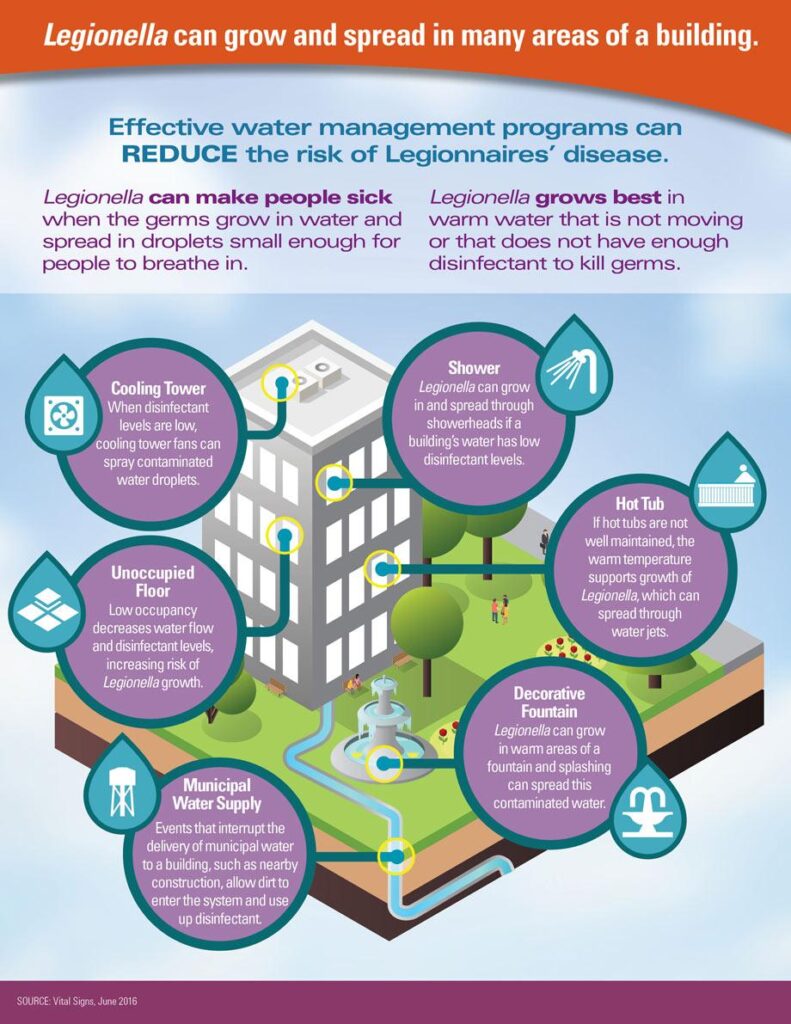Preventing Legionnaires’ Disease: A Comprehensive Approach to Safeguarding Public Health
Legionnaires’ disease, a serious pneumonia caused by Legionella bacteria, remains a pressing public health concern worldwide. Recent surges in cases have highlighted the catastrophic effects of inadequate water system management and insufficient regulatory enforcement. As communities face the repercussions of these avoidable outbreaks, experts emphasize the necessity for immediate reforms, stringent maintenance practices, and enhanced surveillance to protect vulnerable populations. This article explores essential strategies to avert future Legionnaires’ outbreaks, focusing on accountability, infrastructure modernization, and community engagement.
Reforming Water System Regulations: A Critical Step Forward
The recent increase in Legionnaires’ disease incidents has exposed significant gaps in existing water system regulations. Many current policies lack the precision and consistency needed to effectively suppress Legionella proliferation in both public and private water infrastructures. Without comprehensive regulatory upgrades, the risk of exposure to contaminated water remains alarmingly high, especially for at-risk groups such as the elderly and immunocompromised.
Essential regulatory improvements include:
- Implementing mandatory, frequent microbial testing with results accessible to the public
- Establishing thorough documentation and immediate reporting protocols for potential hazards
- Standardizing disinfection procedures and temperature controls across all water systems
- Requiring certified, specialized training for all maintenance personnel and contractors
| Regulatory Component | Current Practice | Recommended Enhancement |
|---|---|---|
| Testing Frequency | Every three months or less | Monthly mandatory testing |
| Transparency | Voluntary disclosure | Compulsory public reporting |
| Training Standards | Varied and inconsistent | Uniform certification programs |
Modernizing Infrastructure to Reduce Legionella Hazards
Decades of deferred upkeep and aging water infrastructure have created ideal conditions for Legionella bacteria to flourish in cooling towers, plumbing systems, and water storage units. To effectively mitigate Legionnaires’ disease risk, municipalities and facility operators must prioritize upgrading and maintaining these critical systems. This involves regular inspections, adoption of cutting-edge water treatment technologies, and strict compliance with safety standards, particularly in high-risk environments such as healthcare facilities, hotels, and public housing.
Below is an overview of common infrastructure challenges and their recommended solutions:
| Infrastructure Component | Typical Problem | Suggested Remedy |
|---|---|---|
| Cooling Towers | Accumulation of biofilms and sediment | Routine cleaning combined with biocide application |
| Water Storage Tanks | Water stagnation and inconsistent temperatures | Enhanced water circulation and thermal insulation |
| Plumbing Networks | Corrosion and dead-end piping | Material upgrades and system redesign to eliminate stagnation |
Addressing these infrastructure vulnerabilities requires coordinated efforts among public health officials, engineers, and policymakers to secure funding and establish governance frameworks that prioritize preventive maintenance. Transparent communication with the public and stakeholders fosters support for proactive strategies, shifting focus from crisis response to prevention. Maintaining robust infrastructure is the frontline defense against Legionnaires’ disease outbreaks.
Advancing Surveillance Systems and Emergency Response
Effective public health surveillance is vital for early detection and containment of Legionnaires’ disease outbreaks. Integrating real-time data analytics with hospital and laboratory reporting enhances the ability to quickly identify unusual pneumonia clusters. Utilizing geographic information systems (GIS) and environmental sensors allows health authorities to trace contamination sources such as cooling towers or water distribution systems. Continuous education for healthcare providers ensures prompt diagnosis and reporting, which is crucial for timely intervention.
Standardized rapid response protocols nationwide empower local health departments with clear guidelines and resources to manage outbreaks efficiently. A collaborative approach involving public health, environmental, and housing agencies streamlines investigation and remediation efforts. Key elements of an effective rapid response include:
- Prompt confirmation of cases using advanced molecular diagnostics
- Efficient communication channels between laboratories, hospitals, and health authorities
- Community involvement to promote awareness and preventive behaviors
- Transparent public updates to maintain trust and reduce misinformation
Empowering Communities Through Education and Prevention
Raising public awareness about Legionnaires’ disease is a cornerstone of outbreak prevention. Health agencies must deliver clear, practical information through diverse platforms such as social media, community workshops, and partnerships with local leaders. Educational campaigns should focus on:
- Identifying early symptoms to encourage timely medical attention
- Recognizing and reporting potential water contamination sources
- Implementing personal and organizational preventive measures
Encouraging routine maintenance and inspections of water systems—especially in hospitals, hotels, and public facilities—is equally important. Embedding educational requirements into building codes and licensing standards ensures that prevention becomes an integral part of infrastructure management. The table below outlines key preventive actions along with responsible parties and recommended frequencies:
| Preventive Measure | Responsible Entity | Recommended Frequency |
|---|---|---|
| Monitoring water temperatures | Facility Managers | Weekly |
| System disinfection and cleaning | Certified Maintenance Contractors | Quarterly |
| Public education and outreach | Health Departments | Continuous |
Conclusion: A Call to Action for Preventing Future Outbreaks
As communities recover from recent Legionnaires’ disease outbreaks, the imperative to implement lasting change has never been clearer. Investing in water system modernization, enforcing stringent health monitoring, and maintaining open communication with the public are vital to preventing future tragedies. Only through unified efforts among public health officials, infrastructure managers, and legislators can we effectively protect public health and avert further unnecessary loss of life. The moment to act decisively is now—before another outbreak takes hold.













